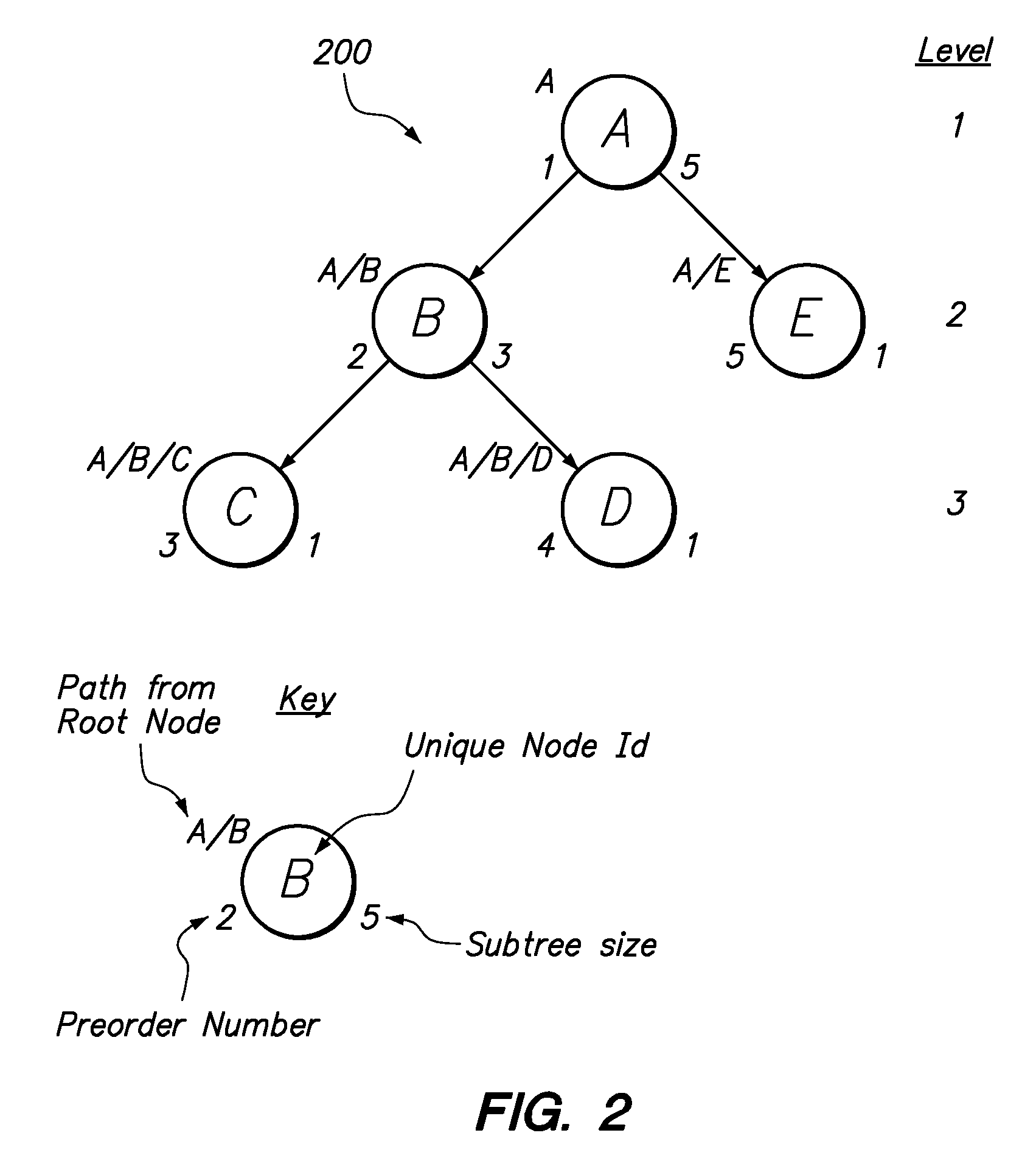Storing Hierarchical Data to Enable Paging
a hierarchical data and paging technology, applied in the field of paging operations, can solve the problems of large amount of memory, large amount of memory and computational resources, and inability to simultaneously depict all the nodes of the tree on a screen at once, so as to save memory and computational resources
- Summary
- Abstract
- Description
- Claims
- Application Information
AI Technical Summary
Benefits of technology
Problems solved by technology
Method used
Image
Examples
Embodiment Construction
[0008]Techniques are provided for storing hierarchal data in a manner that enables paging or scrolling operations to be performed on a tree represented by the hierarchical data. In an embodiment, a preorder number and a subtree size are maintained in a machine-readable medium for each of a plurality of nodes of a tree represented by hierarchical data. The preorder number associated with a particular node of the tree identifies a position of the particular node in a depth-first search ordering of the plurality of nodes of the tree. The subtree size associated with a particular node of the tree identifies a count of all the nodes in a subtree rooted at the particular node.
[0009]In an embodiment, a paging operation may be performed using the preorder number and the subtree size associated with each node of the tree. Approaches are discussed for updating the preorder number and subtree size associated with each node of a tree in response to the performance of edit operations performed o...
PUM
 Login to View More
Login to View More Abstract
Description
Claims
Application Information
 Login to View More
Login to View More - R&D
- Intellectual Property
- Life Sciences
- Materials
- Tech Scout
- Unparalleled Data Quality
- Higher Quality Content
- 60% Fewer Hallucinations
Browse by: Latest US Patents, China's latest patents, Technical Efficacy Thesaurus, Application Domain, Technology Topic, Popular Technical Reports.
© 2025 PatSnap. All rights reserved.Legal|Privacy policy|Modern Slavery Act Transparency Statement|Sitemap|About US| Contact US: help@patsnap.com



